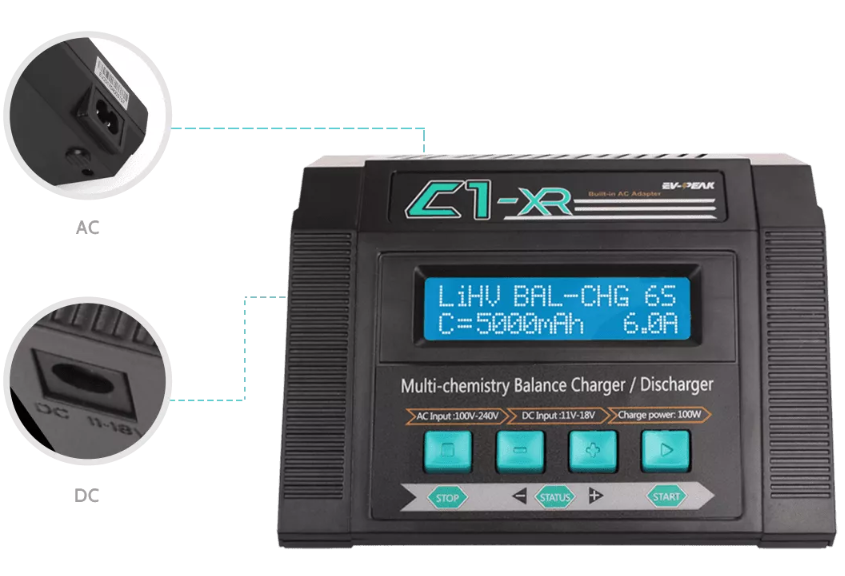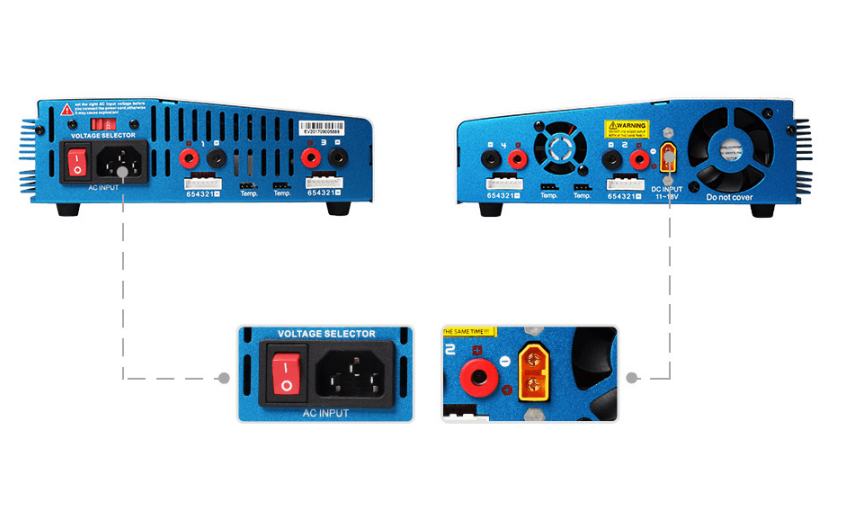Uncover The Secrets Behind The RC Charger Lipo Battery Type
In the world of RC (Remote Control) hobbyists and enthusiasts, the RC charger LiPo battery type plays a crucial role in keeping the high-performance vehicles and aircraft running smoothly.
In this blog, we will explore the key aspects of RC chargers, their types, charging procedures, safety measures, and the future of RC charging technology.
The Importance of an RC Charger in the LiPo Battery Ecosystem:
A. The Role of an RC Charger in LiPo Battery Charging
RC chargers are specialized devices designed to replenish the energy in LiPo batteries efficiently and safely. Unlike conventional battery chargers, RC chargers are tailored to the specific needs of LiPo batteries, considering their delicate chemistry and charging requirements.
These chargers provide precise control over the charging process, ensuring the LiPo batteries are charged optimally without the risk of overcharging or overheating.
B. Understanding the Types of RC Chargers for LiPo Batteries
RC chargers come in various types, each offering unique features and capabilities. Some of the common types include:
a) Balance Chargers:
These chargers monitor and balance the individual cells within the LiPo battery, preventing cell imbalances and enhancing the overall battery life.
b) Fast Chargers:
As the name suggests, fast chargers reduce charging time, making them ideal for enthusiasts who want to get back to the action quickly.
c) Dischargers:
Dischargers help in discharging the LiPo battery to a safe voltage level when storage is required, prolonging battery life.
d) Programmable Chargers:
These advanced chargers allow users to customize charging parameters according to their specific LiPo battery’s requirements.
Best Practices for Charging RC LiPo Batteries:
- Preparing Your LiPo Battery for Charging
Before connecting your LiPo battery to the RC charger, it’s crucial to inspect the battery for any physical damage or swelling. Additionally, ensure that the battery’s voltage is within a safe range to avoid potential hazards during the charging process.
- Understanding Charge Rates and Capacity
RC chargers allow users to adjust the charge rate, which determines how quickly the battery will be charged. It’s essential to set an appropriate charge rate to prevent overheating and extend the battery’s lifespan.

The charge rate is usually expressed in “C” or the battery’s capacity. For example, a 1C charge rate for a 5000mAh battery would be 5A.
- Utilizing Balance Charging for Optimal Performance
Balance charging is a vital feature of RC chargers that ensures all cells within the LiPo battery are charged uniformly. This prevents cell imbalances, which can lead to reduced performance, reduced capacity, or, in extreme cases, cell swelling and fires. Always use the balance charging feature whenever possible.
- Monitoring the Charging Process
During the charging process, it’s essential to keep a close eye on the LiPo battery and charger. If you notice any unusual behavior, such as excessive heat or smoke, immediately disconnect the battery and charger and address the issue before continuing.
Safety Measures for Charging RC LiPo Batteries:
a. Charging LiPo Batteries in a Safe Area
Always charge LiPo batteries in a well-ventilated and fireproof area, away from flammable materials and liquids. Using a LiPo-safe charging bag or container is highly recommended to contain any potential fires in case of a mishap.
b. Avoiding Overcharging and Overdischarging
Overcharging or overdischarging LiPo batteries can lead to permanent damage or pose safety risks. Always set appropriate charge and discharge limits on your RC charger to prevent these issues.
c. Proper Storage of LiPo Batteries
When not in use, store LiPo batteries at around 3.7-3.85V per cell in a cool, dry place. Avoid storing fully charged or fully depleted LiPo batteries for extended periods, as this can lead to cell degradation.
Recommended RC Chargers for Different Charging Needs:
CIFIV’s Versatile RC Chargers for Diverse Charging Needs:
As discussed earlier, the RC charger LiPo battery type is vital for the proper functioning and longevity of LiPo batteries in RC products.
Understanding that consumers have different charging requirements based on their RC devices and batteries, CIFIV has introduced two exceptional RC chargers that cater to a wide range of needs – the C1-XR RC charger lipo type and the CQ3 RC charger lipo type.
1: C1-XR RC Charger LiPo Type:
The C1-XR RC charger lipo type is designed specifically for RC products and comes equipped with dual input ports and multiple protection measures, ensuring the safety and extended lifespan of your batteries.
This charger boasts an impressive compatibility range, supporting various hobby battery packs, including LiPo/LiHV/Life (1-6S), NiMH/NiCd (1-15 cells), and Pb (2-20V) battery packs.

- One Charger for All Battery Types:
What sets the C1-XR apart is its versatility, as it can accommodate different types of hobby battery packs within a wide range. Whether you own LiPo, LiHV, Life, NiMH, NiCd, or even Pb batteries, the C1-XR RC charger has got you covered.
2: CQ3 RC Charger LiPo Type:
Similar to the C1-XR, the CQ3 RC charger lipo type is designed specifically for RC products and offers multiple protection measures to safeguard your battery investments.
This charger supports an even broader range of hobby battery packs, including LiPo (3.7V-22.2V, 1-6S), LiFe (3.2V-19.2V), LIHV (3.85V-23.1V, 1-6S), NiMH/NiCd (1.2V-18V, 1-15 cells), Pb/SLA, and Smart Battery.
- Multi-Channel Charging:
A standout feature of the CQ3 charger is its ability to charge up to four battery packs simultaneously, regardless of their chemistries. With support for LiPo, LiHV, LiFe, NiMH, NiCd, and Pb batteries, this charger is an excellent choice for enthusiasts with a diverse collection of RC devices.
- Power Supply and Input Options
Both the C1-XR and CQ3 chargers offer convenient power supply options to suit various usage scenarios. The CQ3 charger is a basic AC/DC quad balance charger and discharge, with a maximum charge capacity of 5A per channel.
It features a built-in battery power supply and can be connected directly to the main AC socket for indoor use, supporting both AC 110V and 220V inputs. For outdoor use, users can connect to a DC power source, with a range of 11-18V.
The Future of RC Charger LiPo Battery Technology:
Advancements in Charging Efficiency
As technology progresses, we can expect RC chargers to become even more efficient, reducing charging times and enhancing overall performance.
Integration of Smart Features Future
RC chargers may incorporate smart features such as smartphone connectivity, app integration, and cloud-based data storage, providing users with real-time charging data and analytics.
Enhanced Safety Protocols
Manufacturers are continually working to improve the safety features of RC chargers, mitigating risks and providing users with a more secure charging experience.
Final words:
The RC charger LiPo battery type is an integral part of the RC hobbyist’s toolkit, ensuring the longevity and optimal performance of LiPo batteries.
By understanding the different types of RC chargers, best practices for charging, and essential safety measures, enthusiasts can enjoy their RC vehicles and aircraft with peace of mind.
As technology advances, we can expect even more efficient and feature-rich RC chargers, enhancing the overall experience for RC enthusiasts worldwide. Happy and safe charging!



